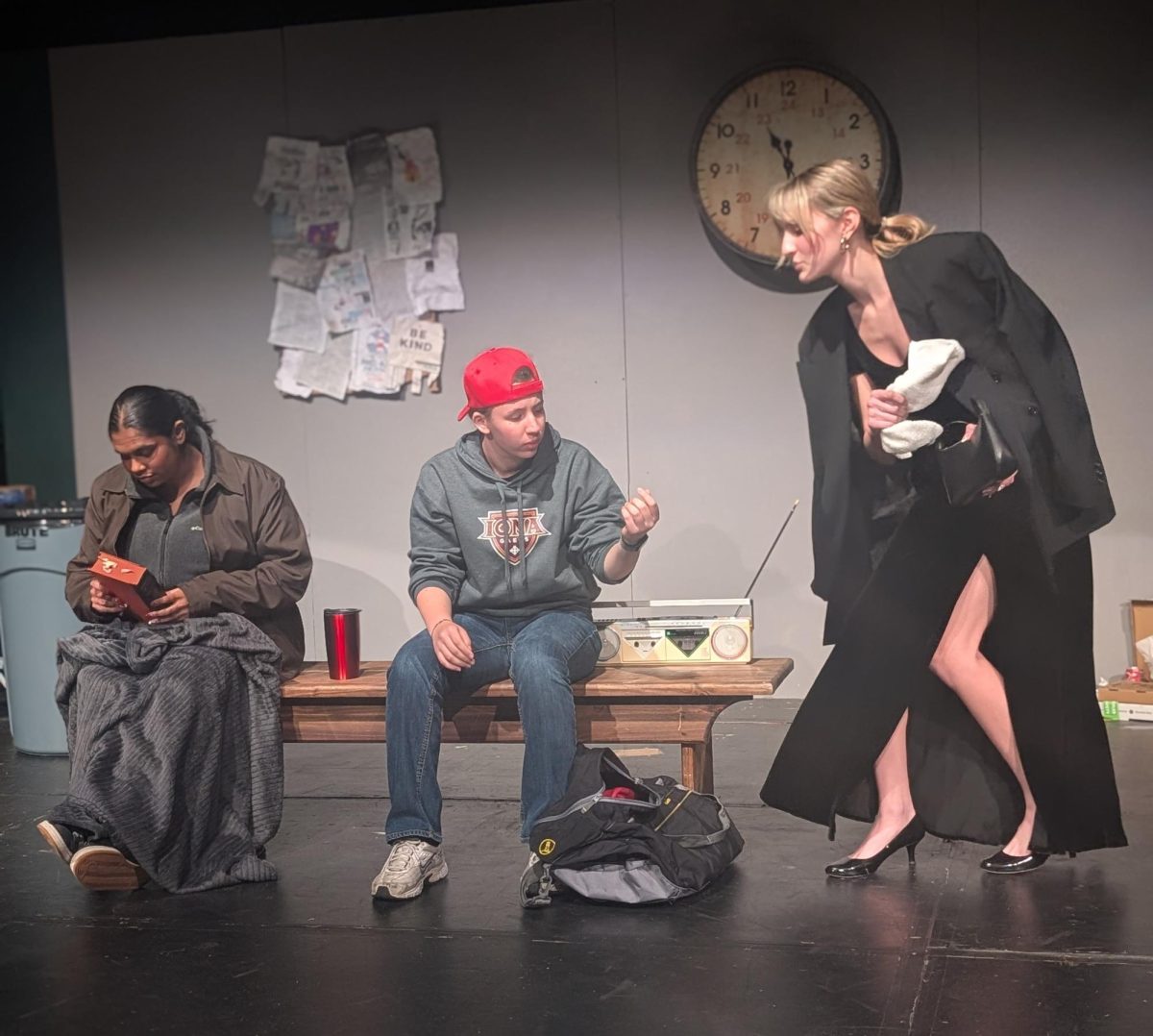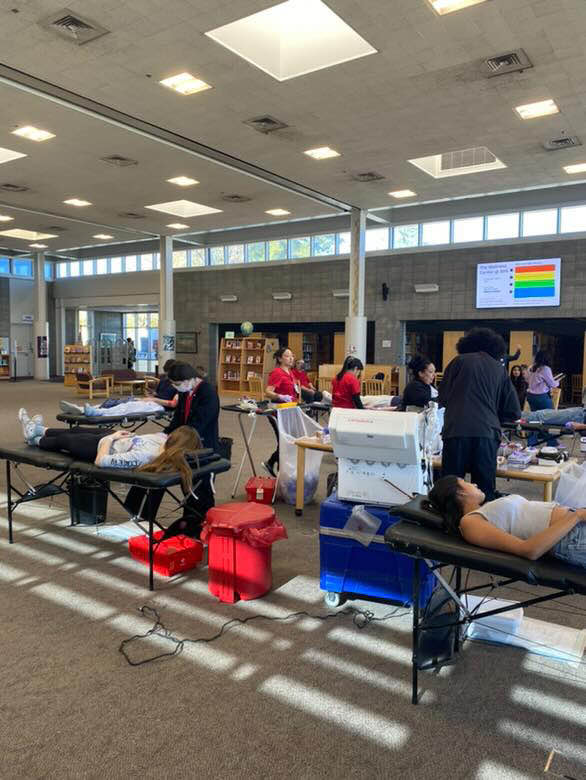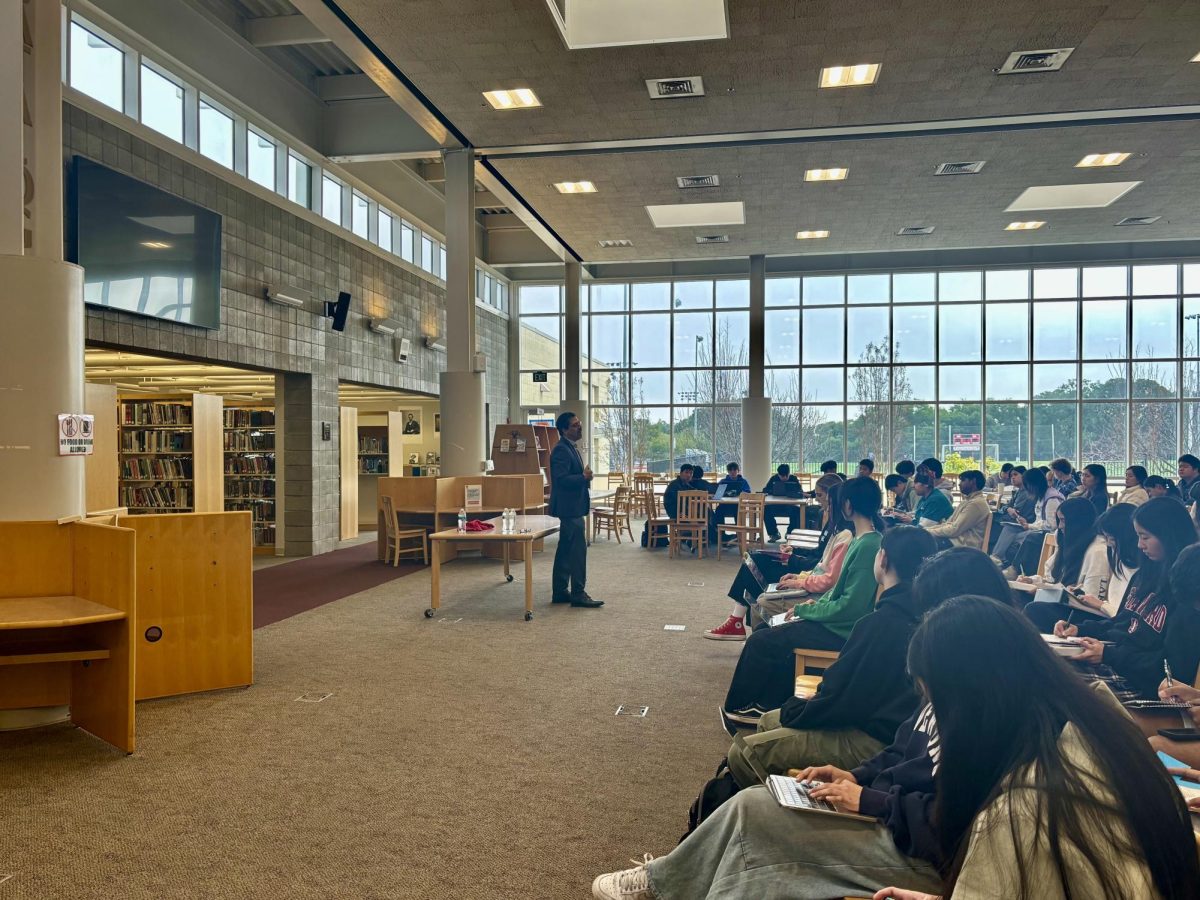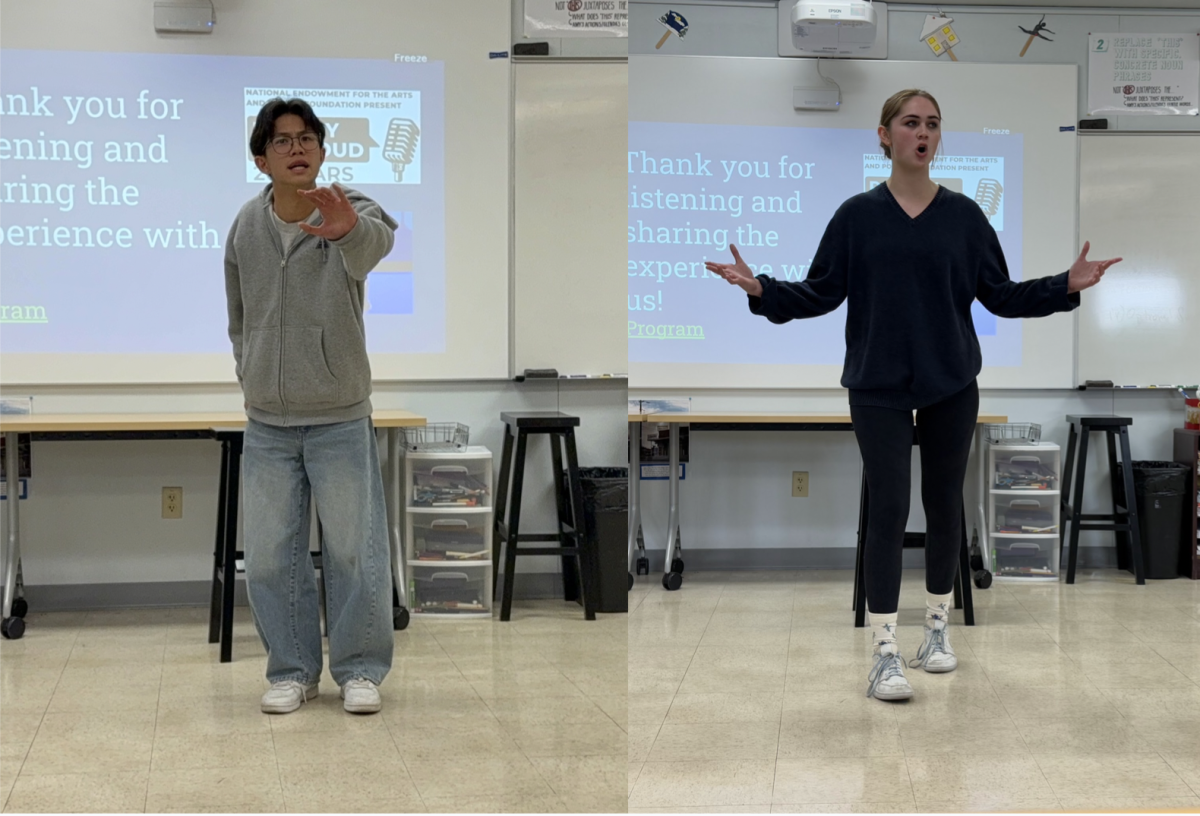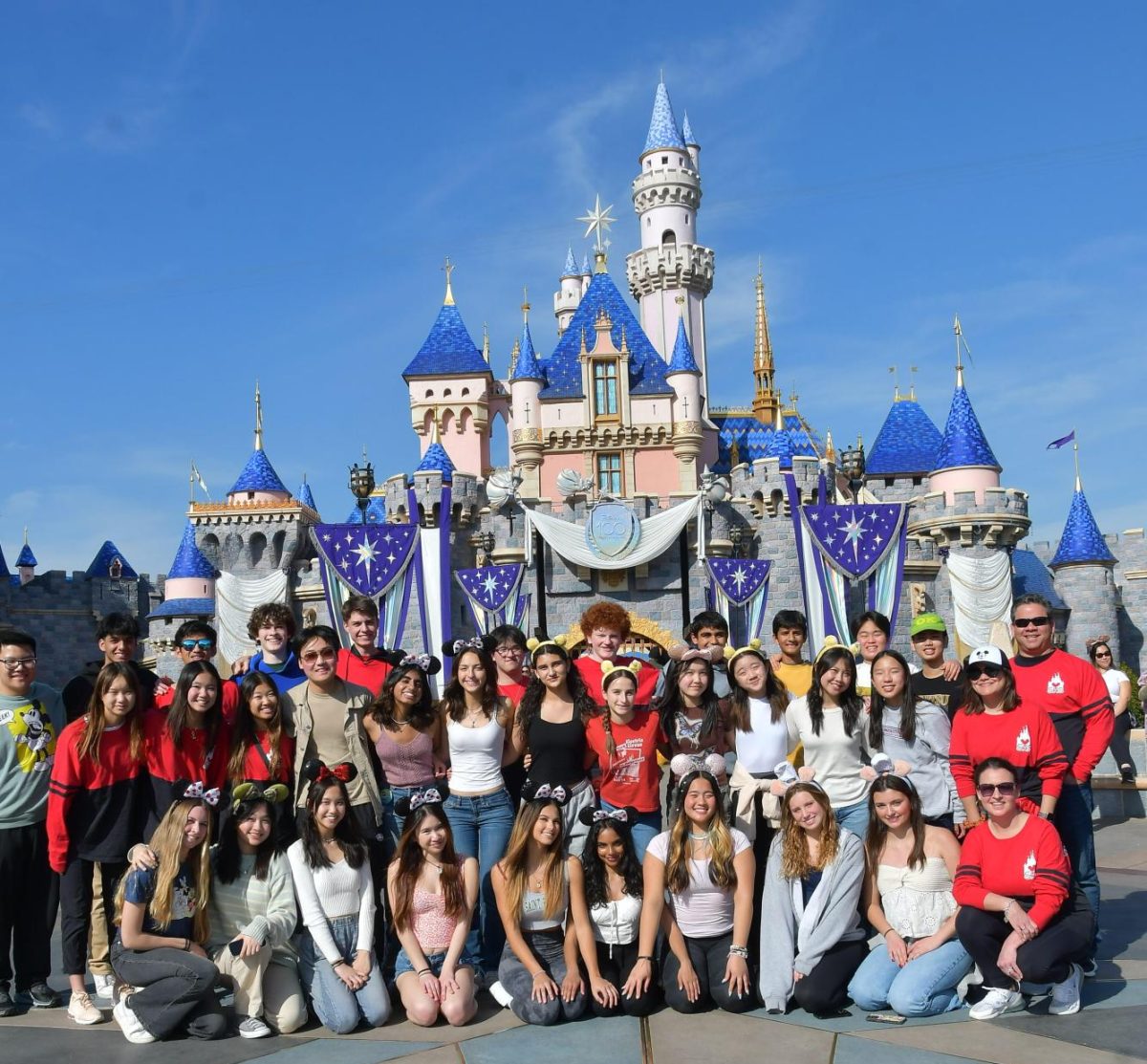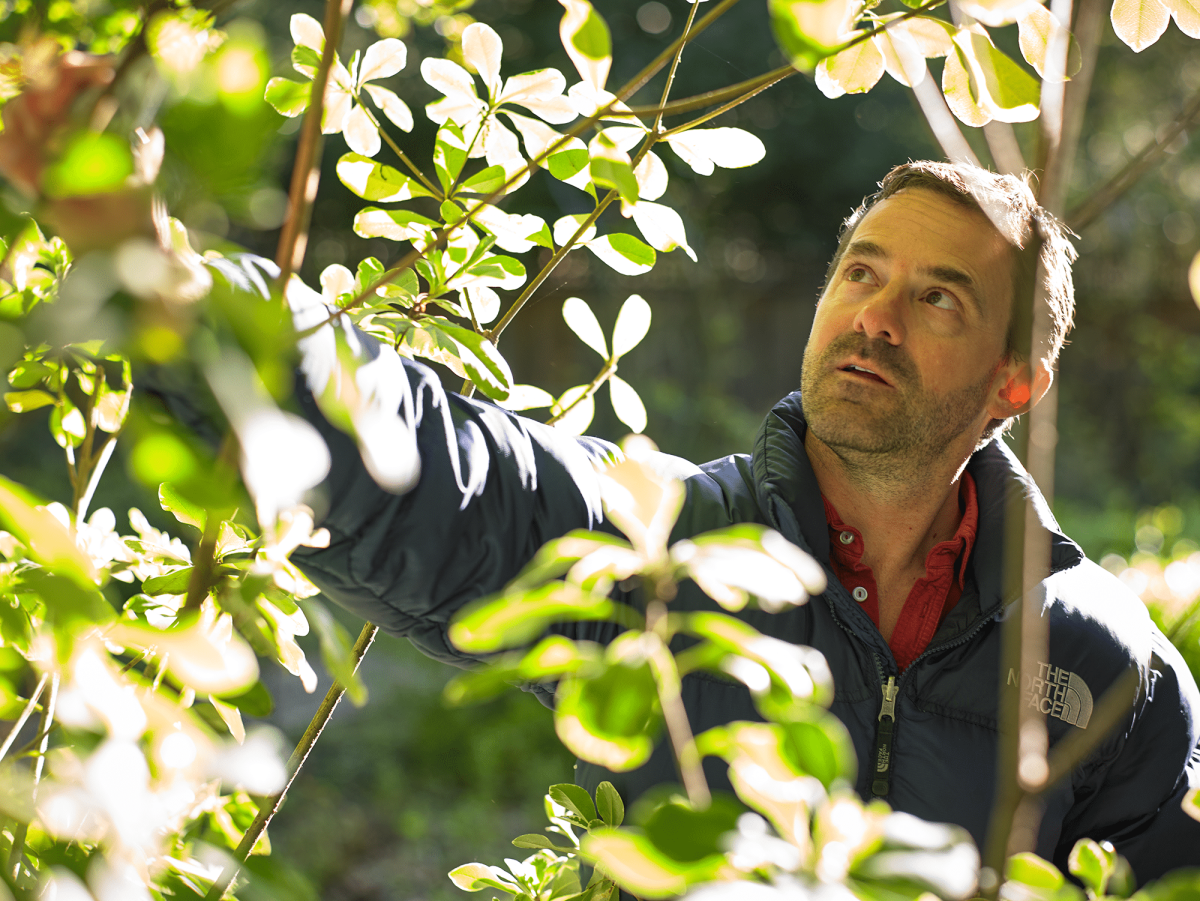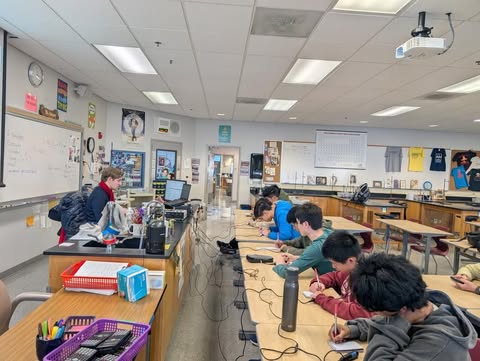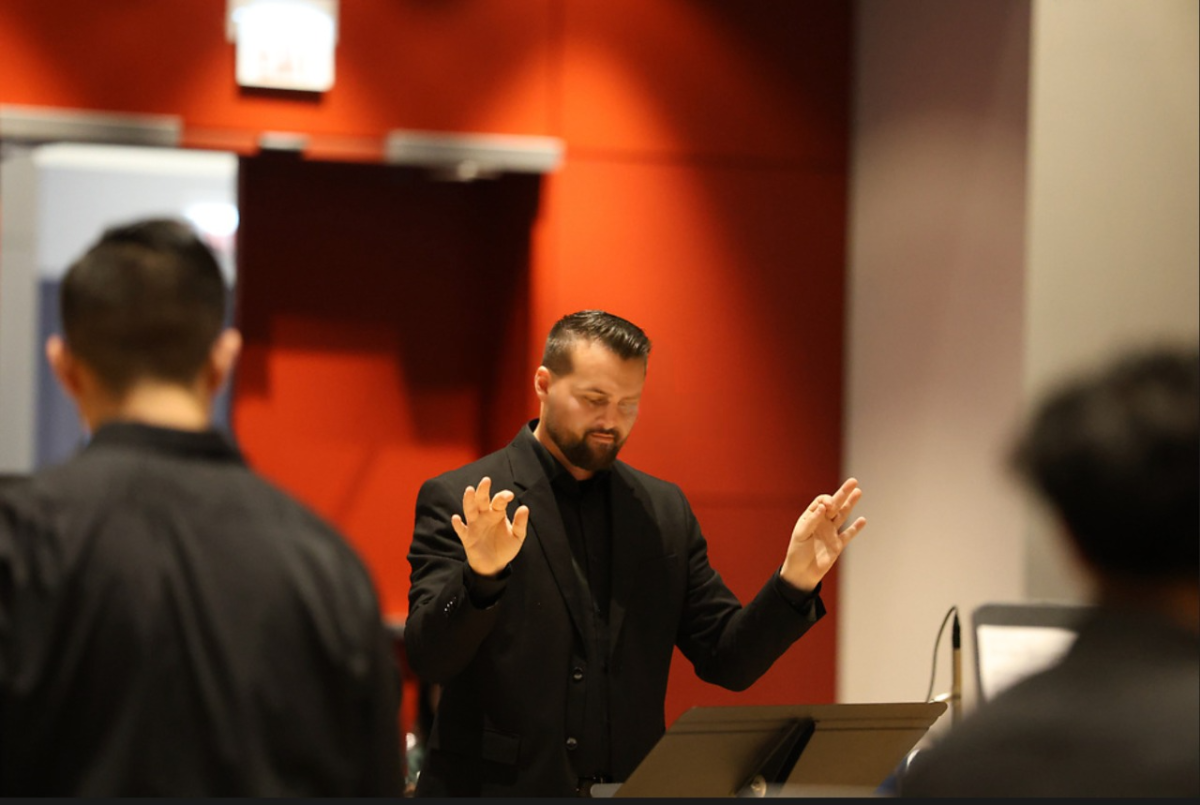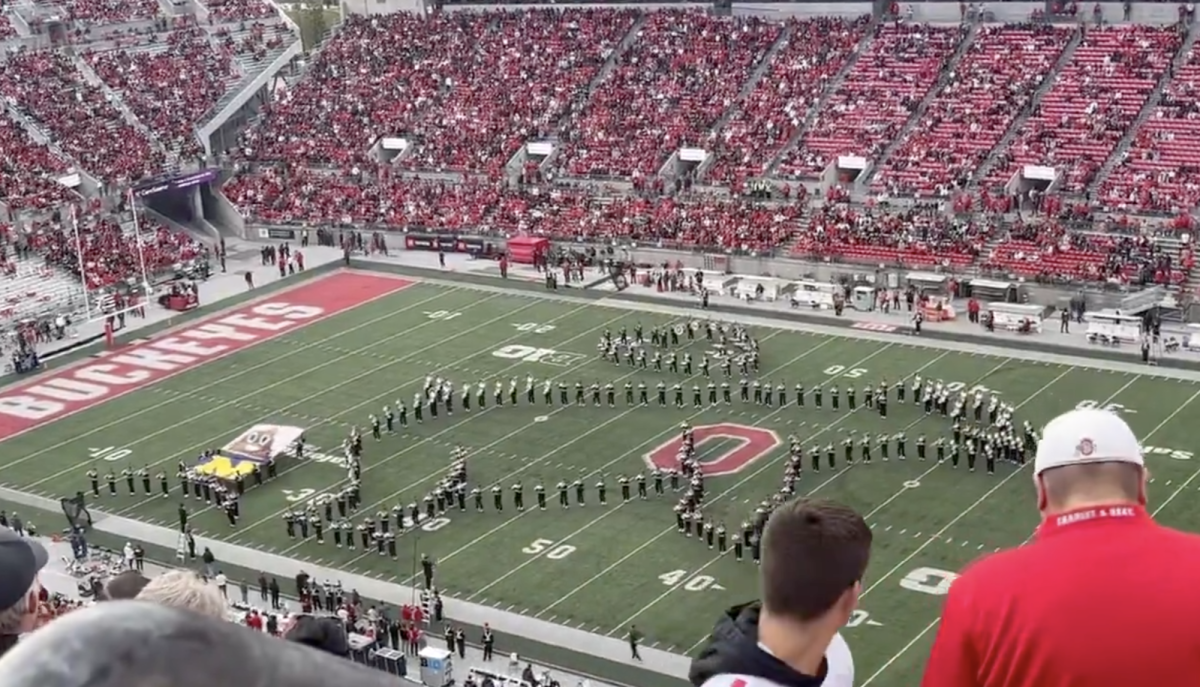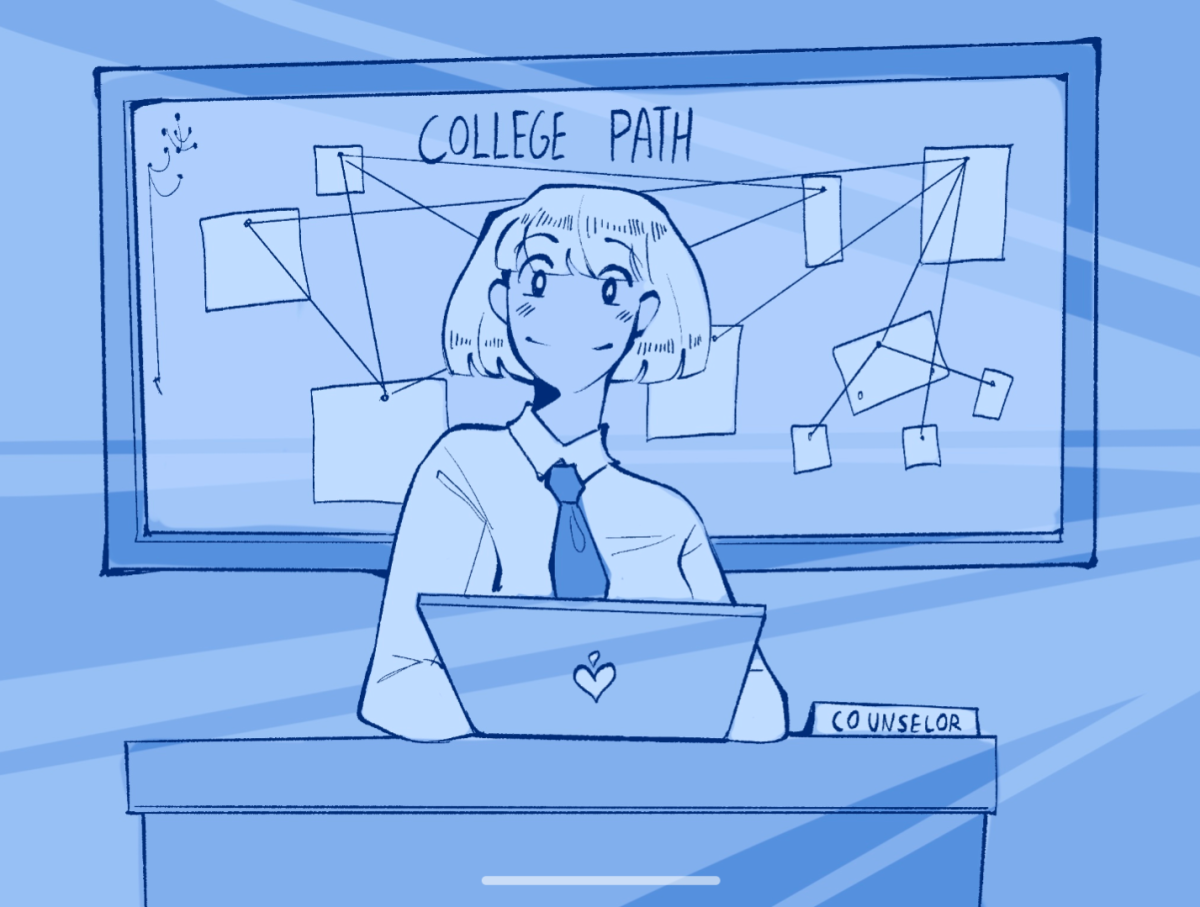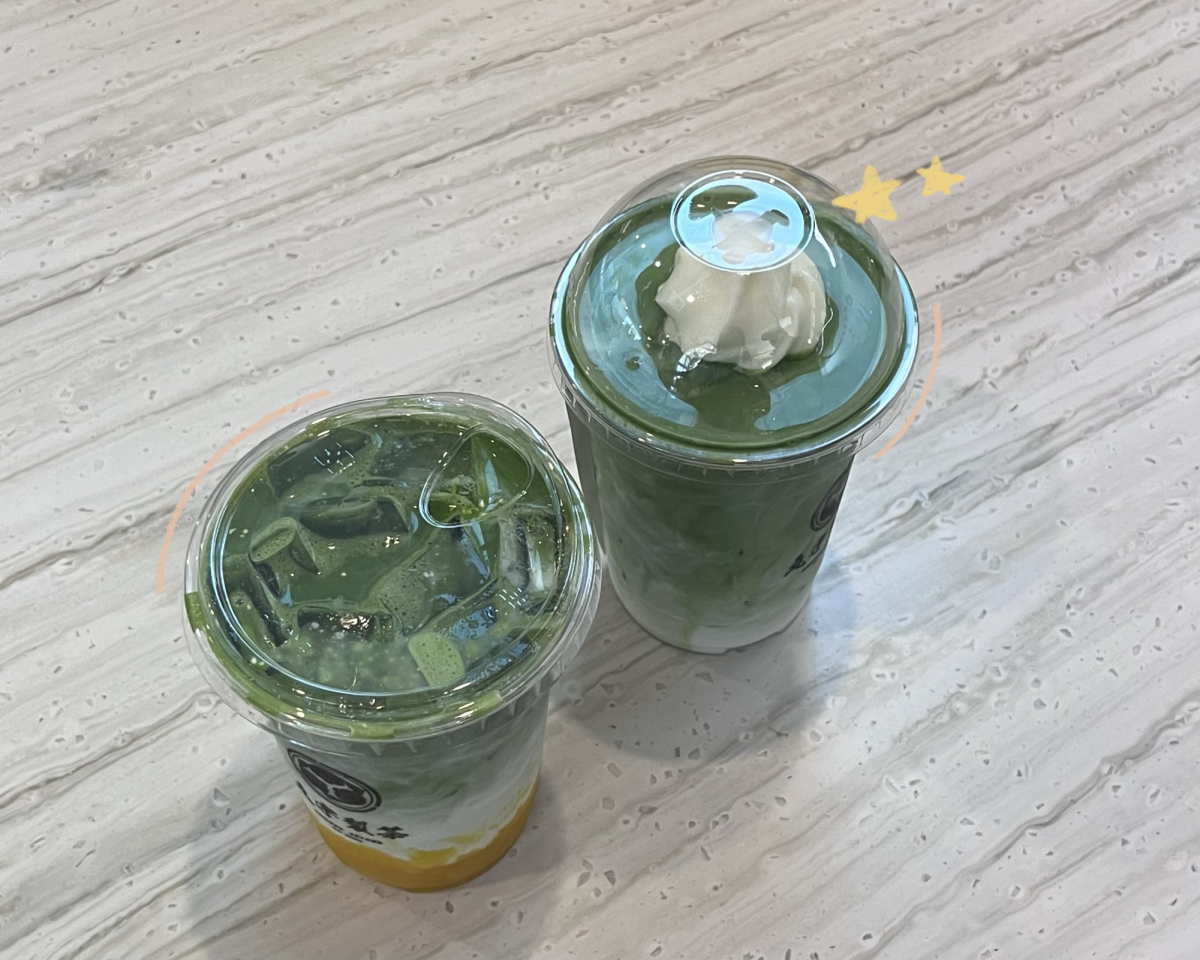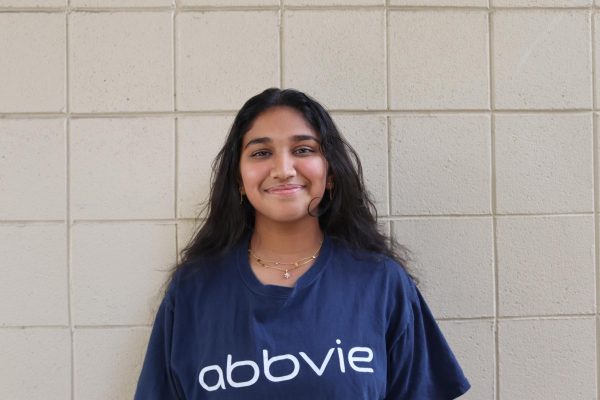His hands tell his story — worn, calloused and etched with decades of labor spent sculpting the landscapes of the Silicon Valley elite. Each scar bears witness to the artistry and toil behind the manicured landscapes he has tended.
Those hands belong to Michael Young, 58, who dropped out of school in 1984 in his senior year and never graduated high school. He spent the next decade working to discover his passion, landscape design, and eventually made a highly successful business out of it. He returned to school in September with dozens of his former classmates for his 40-year reunion.
Looking back, he called himself a struggling, aimless teenager who wanted to chase his wildest dreams outside of the classroom. Now retired and financially successful, Young once spent his days doing backbreaking labor under the relentless California sun, planting, pruning and perfecting the outdoor spaces of his clients.
Young spent his life working for some of the valley’s most influential people, and his journey to get there was far from ordinary.
Young struggles in Saratoga amid intense academic pressure
Young, born in Santa Clara in 1966, grew up in the heart of Saratoga along Highway 9. He attended Oak Street Elementary — now Saratoga Elementary School — Redwood Middle School and SHS.
His first exposure to agriculture was in his childhood home’s massive garden and surrounding orchards, where he learned to live with nature. As a child, he also participated in a Saratoga Union School District program called “Enrichment,” which exposed local youth to the outdoors, arts and music, developing his love for the subjects.
Saratoga was a drastically different town during Young’s upbringing. Compared to its current population, where just 37.8% of residents are white, the Saratoga of the ‘80s was predominantly white; at that time, 94.4% of residents were Caucasian, while only 4.6% were Asian. Rather than working primarily in tech-focused industries, as they do now, residents more often held jobs in agriculture or owned and ran small businesses.
Still, even during the ‘80s, SHS was an academically focused school characterized by scholastic achievement. Study halls were spent rushing through English homework, and lunches were reserved for last-minute cramming of Spanish verb conjugations.
Yet, for some students, including Young, the academic path never took hold.
Often labeled “rebels” or “troublemakers” by teachers and parents, this group took a less conventional approach through high school. Young’s ideal future strayed from the path so prevalent in this community — rather than pursuing a college degree, he envisioned himself backpacking around the world.
Feeling the extreme academic pressure of SHS, he often considered transferring to Los Gatos High, which offered more vocational classes like automotive mechanics and woodshop. Unfortunately, his repeated attempts to change schools were blocked by the administrators for reasons still unknown to him, leaving him trapped and struggling to stay afloat at SHS.
“I hated high school,” Young said. “I didn’t fit in socially or academically, and, though Saratoga is an ideal community, I couldn’t enjoy it.”
By the time his senior year came around, Young was hardly attending school and failing all his classes. He ended up falling so far behind that he had to retake Algebra twice.
Finally, he had to ask himself: “Why be here?”
After years of trying and failing to force himself into the mold of the “Saratoga student,” he chose to forge his own path. He made the decision to drop out, giving himself the room to grow and pursue the passions he held outside of the classroom.
“There was this total frustration with not being able to get what I wanted out of life at school, and realizing that time had run short,” Young said. “I would rather be in Australia chasing a dream than sitting through math in Saratoga trying to fit in.”
His decision to leave school was met with both judgment and concern from his family and friends. He had no concrete plans for his future, and no knowledge of what came next. Nothing except for a vague dream that he was willing to chase halfway across the world. And so he did.
“If you listen to all the noise, you’re never going to find yourself. You have to decide: ‘[My dreams] are important to me, and they’re so important to me that I’m going to act on them,’” Young said.
Young explores passions in Oceania
After the abrupt end to his high school career, Young decided to take his chance to experience life outside of Saratoga.
He took a few years to explore, bouncing between different community colleges and living abroad. He spent a year each in New Zealand and Australia working on farms and furthering his interest in the environment by “going back to the land.” While he was there, he also visited the Great Barrier Reef and other natural wonders in Oceania, helping to further ignite his passion for the environment. He financed his adventures through farm work, jobs at nature reserves and careful budgeting.
During his time untethered to societal standards, Young experienced paralyzing doubt about his future.
“I remember waking in New Zealand on a beach just going: ‘What am I doing with my life? What am I doing on this beach? Everybody else is in class; where is this going?’” Young said.
Eventually, as his carefree days of travel came to an end, Young decided to move back to California to attend college and “stick it out this time.” He got his General Education Development diploma — which awards high school credentials in lieu of a high school diploma through testing— and set out to attend UC Berkeley, ranked as one of the top 5 schools in the nation at the time.
With his lackluster report cards and no official high school diploma, his application was rejected almost immediately. But Young, motivated by a newfound passion to attend school, refused to accept the resignation and called the dean of admissions to schedule a meeting.
“I knew I wasn’t going to attend college unless I went to Berkeley, and this program was super exciting,” Young said. “I tend to be single-minded once I decide what I want. When I made the appointment with the dean, I explained that I would do whatever it takes to get in.”
The dean was so impressed by Young’s clear passion for the environment, demonstrated through his work in Australia and New Zealand, and his determination to go to Berkeley, that he offered Young a spot as a 22-year-old freshman in the Class of ‘92 Conservation and Resource Studies department.
While managing his coursework in college, Young also landed an internship at Hidden Villa Farms in 1989, where he began laying the groundwork for his own arbor business maintaining the topiary of the Bay Area elite.
Through this internship, he met his arborist mentor, Kevin Raftery, and was able to begin building a network with wealthy Silicon Valley CEOs, who were willing to pay for “quality work and long term relationships.”
“I never got into it to grow it or to make money, but rather to do something very authentic to myself — which was delivering efficient, high quality work and customer service. With those things, you can demand a premium price,” Young said.
Young builds a future in agriculture
After successfully graduating from UC Berkeley in 1992 with honors and a 4.0 GPA, Young began his own arbor business, Urban Tree Management, offering high-quality landscaping services for the wealthy residents of the Bay Area.
He began operating his business out of his house, and leveraged the connections he made in his work at the arboretum to gain his first few clients. He adhered to two core principles that defined all of his jobs — “quality work and long-term relationships.”
“It sort of grew on its own; there was no plan beyond high quality work,” Young said.
Though money was never a priority when he began his business, his mindset shifted dramatically after starting a family in 1996.
“As soon as you have kids, it’s not just about you,” he said. “My time became a lot more valuable, because I wasn’t just supporting myself but also the family. I became much more serious about the business when I had children.”
Young retires from an era
Young took an unusual path through his Saratoga youth, one that led him further financially than many of his peers. Though many had previously judged and mocked him for his failures at school, Young proved that early academic achievement doesn’t define success, when he attended his 40-year high school reunion as the owner of two houses and two Porsches.
Young recently sold his multi-million dollar business, which employs over 20 people, to a private equity firm, and he retired in December. After years of hard work, he now spends his time exploring the world, fulfilling all his childhood dreams.
He began his travel journey by spending a month in Japan and Hawaii each, experiencing the culture, food and natural wonders each place has to offer.
Though Young didn’t make it through high school, all three of his kids went on to attend prestigious universities after completing high school. Young never forced them to pursue an academic career. Instead, he encouraged them to find their spark and follow it wherever it led them, a philosophy that he believes should apply to everyone.
“Explore ideas that you enjoy,” he said. “Delve into it. It doesn’t matter what everybody else says. High school is the time to cast a wide net and go down those pathways that interest you. It’s not about the rebellion, but following those paths that bring you joy and fulfillment.”

